-
Posts
2.067 -
Joined
-
Last visited
-
Days Won
52
Posts posted by Genava55
-
-
1 hour ago, Ultimate Aurelian said:
BTW the Cimbri are described with shining iron breastplates (Maybe just the way the author described mail, some r2tw mods have then with Iberian esque plates but might be innacurate).
"θώραξι δὲ κεκοσμημένοι σιδηροῖς", thoraxi is any kind of body armor. In this case I would think of a Celtic chain mail with decorated stuff.
Anyway everything looks Celtic in their description, especially the two types of spear, a very Celtic like feature. Maybe there is the same within the Przeworsk culture, I dont know. Need to check.
-
13 minutes ago, Ultimate Aurelian said:
Choosing regions is a good way portray the diversity of germanics, without having to implement multiple factions (Cimbrians or Rhine tribes might be doable in the future, but a Lugii or Aestii faction would be very difficult to find material on).
The Aestii yes clearly. The Lugii not necessarily, this is the Przeworsk culture, the same as the later Vandals. The only trouble would be to find heroes, the only known names are from the Vandals.
-
41 minutes ago, Ultimate Aurelian said:
Although it says they mounted quickly, so it's possible they were mounted infantry who fired slings on foot.
It could be mounted infantry indeed. Hard to know exactly.
42 minutes ago, Ultimate Aurelian said:Or maybe the mounted slinger you mentioned; which i guess is based on this account by Hadrian:
There is another account as well
Book 1, Ch. 46: "While these things are being transacted in the conference it was announced to Caesar that the cavalry of Ariovistus were approaching nearer the mound, and were riding up to our men, and casting stones and weapons at them."
43 minutes ago, Ultimate Aurelian said:Batavian regional mercenary unit, the heaviest cavalry avaliable to Germans (Cimbri have heaviest infantry).
Clearly regional units should be an important asset. Itself, the Suebian tribe doesn't seem to have such an amazing and diversified roster but by including other neighboring tribes it becomes more solid and balanced.
-
-
8 hours ago, Ultimate Aurelian said:
Thanks for the video. Interesting opinion.
Personally I see the Tanderagee Idol representing some sort of Late Roman, Anglo-Saxon or Viking helmet:
So probably not the better fit for the faction.
8 hours ago, Ultimate Aurelian said:I would be careful with the Janus figure because it could be hair represented on the statue.
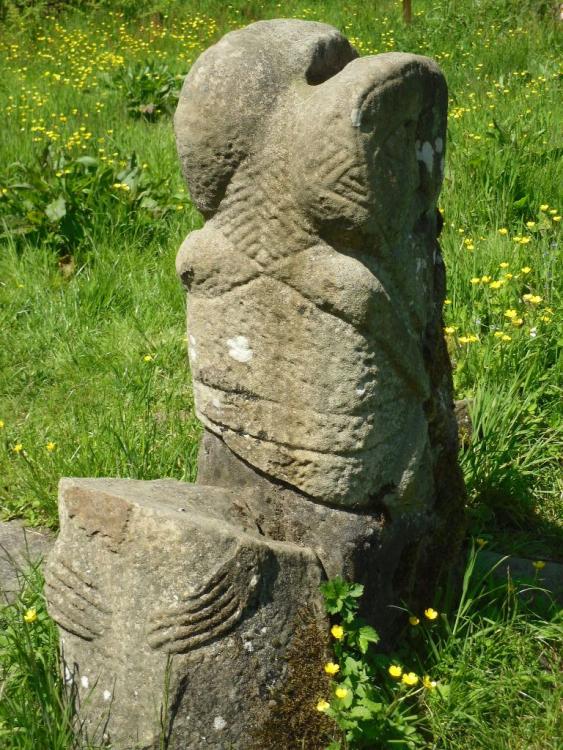
You can visualize the statue in 3D here: https://sketchfab.com/3d-models/boa-island-janus-figure-ce8038c2d4594b6b9b14a520f0bc0b23
8 hours ago, Ultimate Aurelian said: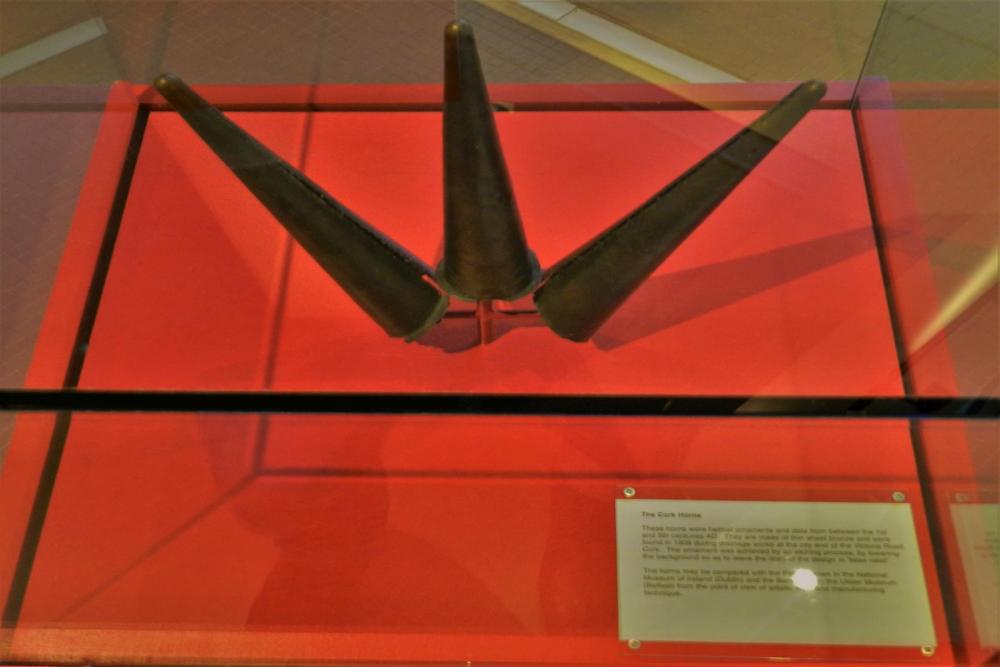
That's very interesting. Thank you very much. It could be a kind of crown or ceremonial hat indeed. Why not using it.
-
Personnaly I would prefer to portray evolving factions than splitting in several periods the civs.
I would prefer a Roman republic evolving from the second Latin War to Antony's Civil War, with reforms and technologies available.
About the Roman Empire, it could be indeed interesting to split it in two because each period has very interesting development in their own, culturally, religiously and militarly speaking.
-
 1
1
-
-
21 minutes ago, Ultimate Aurelian said:
The phrygian-esque hat of the tollund man could be used, either for merchants (Since a lot of the ingame merchants use some kind of hat) or even priest (Odin's pointy hat ?)
By the way http://tollundmanden.one/?lang=en
-
 2
2
-
-
1 hour ago, Ultimate Aurelian said:
Carthaginian balearic slinger is a exception, i think they used lead projectiles too.
Balearic slingers yes, they used lead it is certain, we found lead bullets in France from the Gallic Wars. Caesar used them a lot during his campaigns.
But I was speaking generally about the size of the projectile, not their type. In Gallic context we found a huge variety of size for the sling ammunition. Stones are generally between 50 and 120 g and there are examples with higher weight.
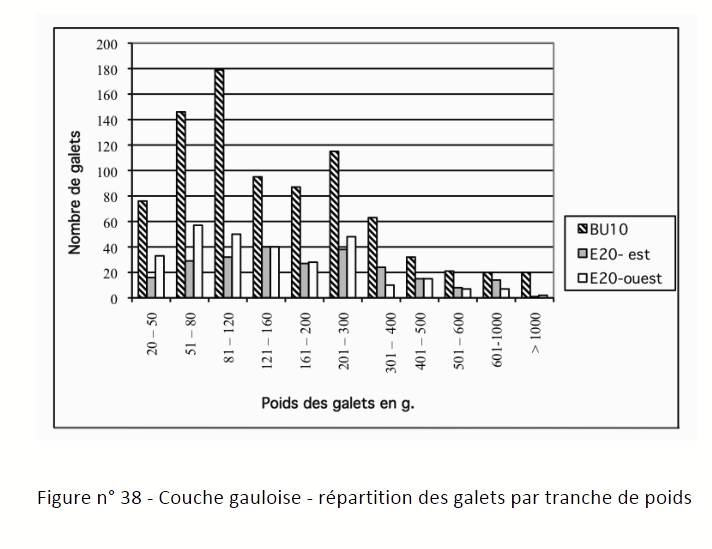
In the British Isles, at Sussex, there are some case of very well sorted stones probably used for slingshots, mostly between 30 and 90 g.
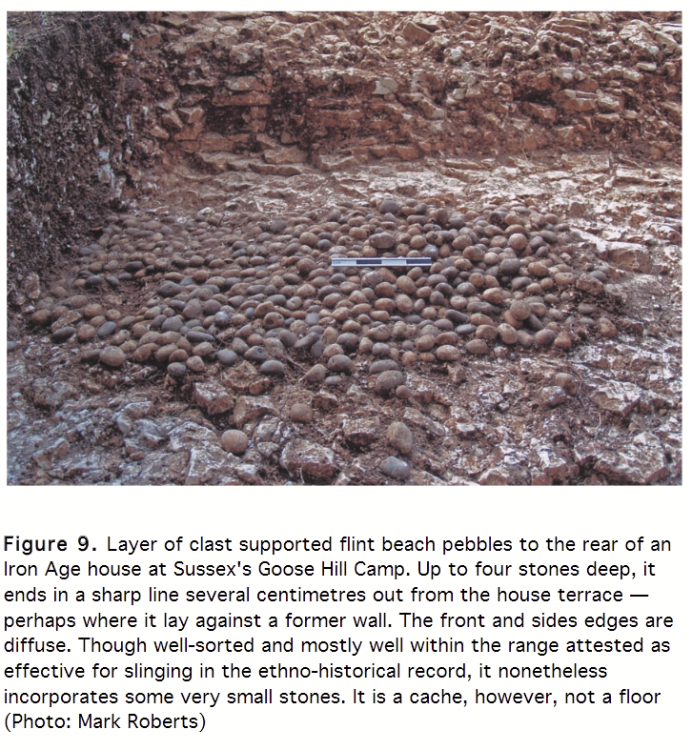
-
9 minutes ago, Nescio said:
(I assume the 111 is a typo for iii, because the relevant paragraph is indeed in book III, section 3.)
Yep, it is a typo when I copy pasted the reference. Thank you for the correction.
9 minutes ago, Nescio said:Rhodian slingers > Iranian archers > Cretan archers > non-Greek slingers > javelineers
The non-Greek slingers seem to use very different size of projectile. In the case of the account from Xenophon, the Persian slingers were using very heavy projectiles (as you noticed, they are various projectiles for different roles):
"Now I am told that there are Rhodians in our army, that most of them understand the use of the sling, and that their missile carries no less than twice as far as those from the Persian slings. For the latter have only a short range because the stones that are used in them are as large as the hand can hold; the Rhodians, however, are versed also in the art of slinging leaden bullets."
This is what is difficult about the sling, there are various applications and traditions in its use.
-
Slinger much stronger against units without shields (archers, slingers etc.)? Javelin much stronger against unit with shield (infantry, cavalry)? Archer stronger against both but less than slingers and javelineers respectively?
-
-
The Gallic Wars, Book 5, Ch. 43: On the seventh day of the attack, a very high wind having sprung up, they began to discharge by their slings hot balls made of burned or hardened clay, and heated javelins, upon the huts, which, after the Gallic custom, were thatched with straw. These quickly took fire, and by the violence of the wind, scattered their flames in every part of the camp.
By the way about the range: https://en.wikipedia.org/wiki/Sling_(weapon)#Today
-
 1
1
-
-
43 minutes ago, fatherbushido said:
Just because it launches stone, it costs stone. That's fine but sounds weird on another side (the stone resource is just an abstraction). I never succeed to figure out what to think here.
Highly skilled slingers like those from Rhodes and the Balneares used metallic projectile. And indeed, stone cost is not really justified even for the regular ones.
Historically, Rhodian slingers have been used to counter Persian archers. See Xenophon in Anabasis 111.3. 7 to 20.
-
 1
1
-
-
-
6 minutes ago, Stan` said:
Might be, but I won't be able to work on that until I finish some other things. I'd like to have a statue of https://fr.wikipedia.org/wiki/Cernunnos for the temples maybe.
In Fellbach-Schmiden, Germany, some kind of wooden reliefs or statues have been found
https://bawue.museum-digital.de/index.php?t=objekt&oges=99
https://bawue.museum-digital.de/index.php?t=objekt&oges=575&cachesLoaded=true
Some reconstructions have been proposed:
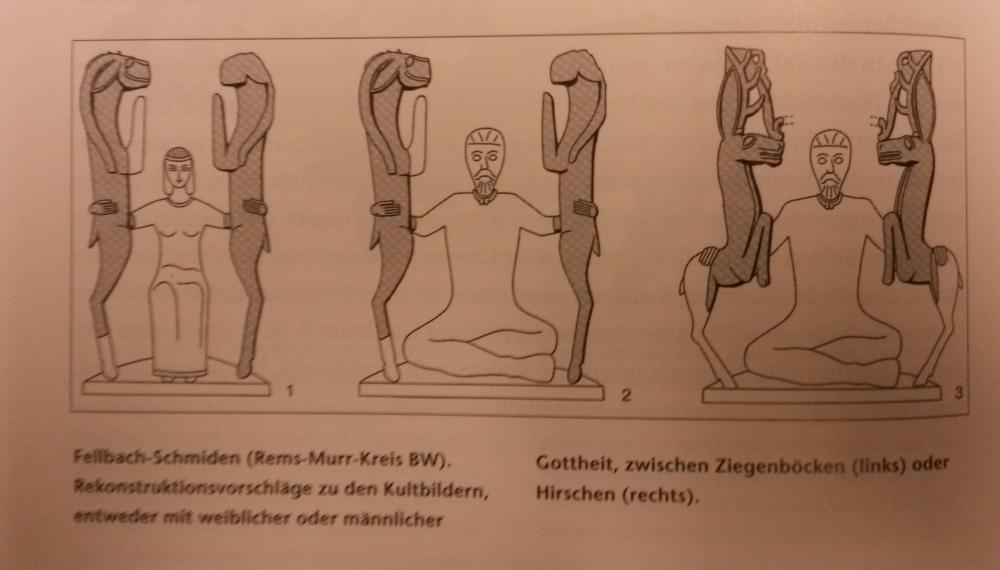
One of them could represent Cernunnos. It isn't impossible it had horns as well.
28 minutes ago, Stan` said:I'm making the last adjustments this is the last step if you think that is better. I wanted to adress a few of @Nescio's requests without spending too much time on them, because sadly I don't have unlimited time

It's nitpicking, it is not important if you have more urgent stuff to do.
-
 1
1
-
-
57 minutes ago, Nescio said:
Cult statues belong inside the cella/naos/shrine (except when carried around in a procession).
With the Celts it is a bit more complicated. For example the two statues found in Switzerland, at Yverdon-les-Bains and Genève (Geneva) has been found outdoor. The former outside the rampart, the latter close to the lake shore.
There were probably statues in sanctuaries, but we know there were statues outside as well. Because of a particular feature (see following).
57 minutes ago, Nescio said:Speaking of which, do we know to which god(s) this sanctuary was dedicated?
Not at all. It is further complicated because the ancestor cult at this time is much more active in Celtic and Germanic societies than it is in Roman and Greek ones.
In addition, we call it sanctuary but it is actually closer to the Greek concept of temenos, which could have various function.
We do not know if this building and area were dedicated to one or several gods or to an ancestor or if the religious function was kinda secondary.
54 minutes ago, Stan` said:If I switch their position it's fine?
Isn't this wooden statue already planned for the Gallic temple? Simply asking.
About the wonder, if you switch, I am fine with that.
-
54 minutes ago, Loki1950 said:
It is a portrait of a deity after all.
Not that uncommon to portray such big maces, especially for cavalrymen, in the later eras (upper left):
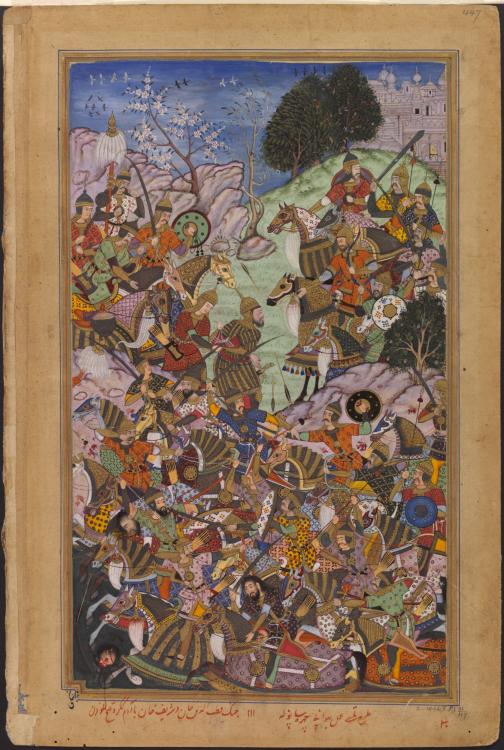
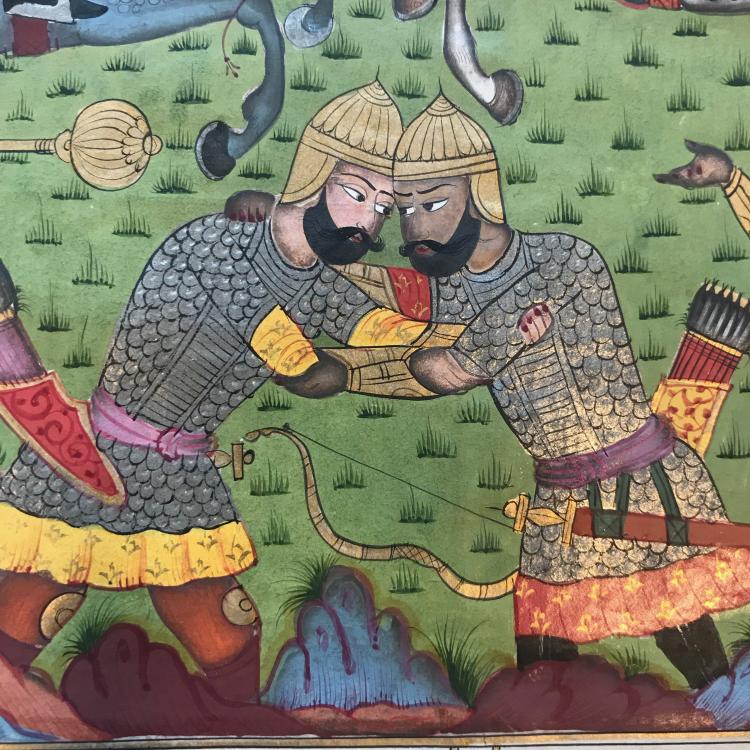
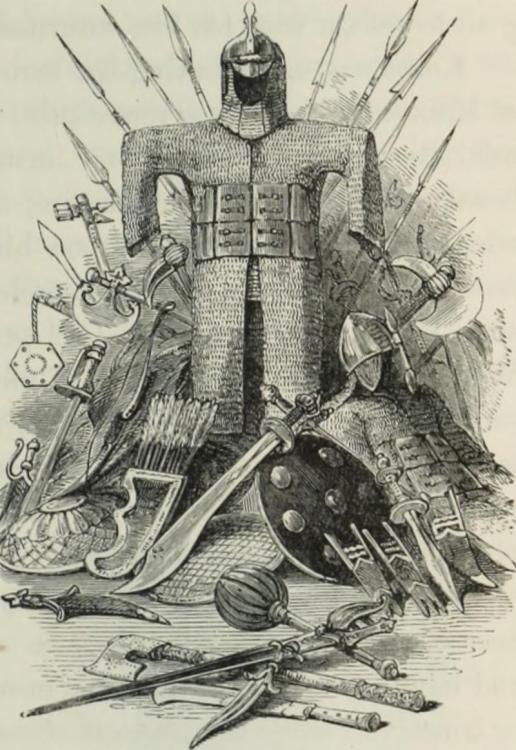
Although it is probably an officer and ceremonial type of mace. It is also depicted in religious interpretation of historical events in Mughal India:
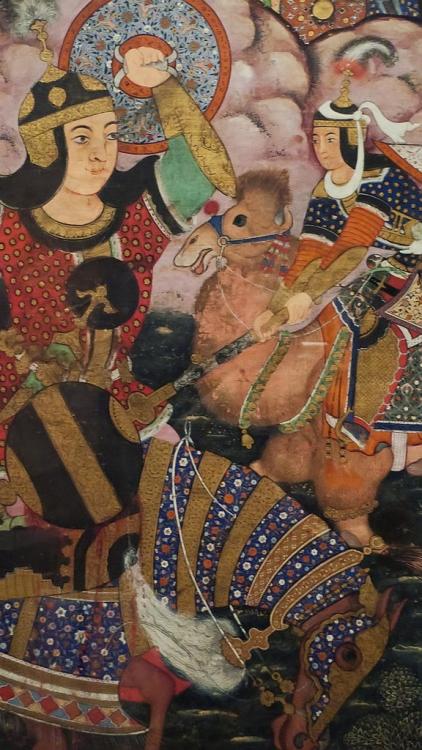
-
25 minutes ago, Loki1950 said:
Most battle axes average 5 to 10 Kg
I assure you it is far too heavy for anything. Even to cut wood. Even a medieval two-handed war hammer doesn't reach 5 kilograms.
4 minutes ago, Nescio said:Not in our timeframe, at least not that I know of.
Nope. Axes are rarely used on the battlefield since the beginning of the iron age.
Maybe the Germans could have thrown wooden staffs and axes but there are no conclusive evidence before the Franks and their francisca. However, the francisca is used like the Roman pilum. Dedicated units throwing axes continuously never existed.
-
37 minutes ago, Lion.Kanzen said:
Quite impractical.
-
 1
1
-
-
Slightly outside the period but interesting
-
 2
2
-
-
1 hour ago, sauerkrautpie said:
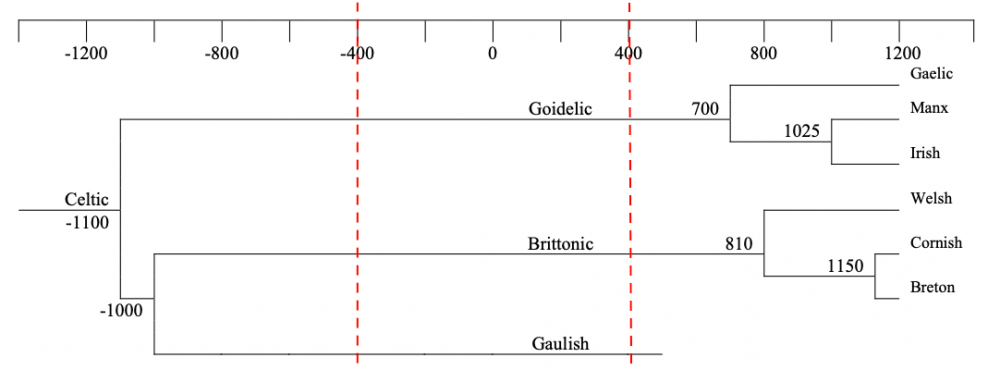
Nobody knows how and when the Celtic languages splited. This is a very strong debate in linguistic notably between the models of Karl Horst Schmidt and Kim McCone.
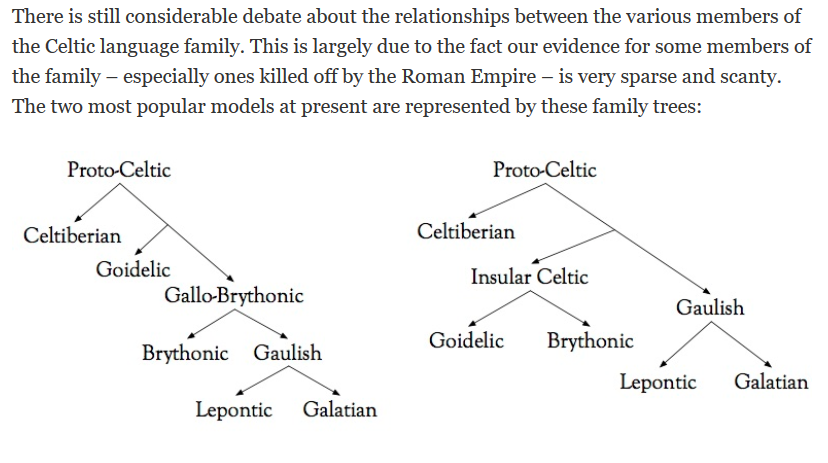 1 hour ago, sauerkrautpie said:
1 hour ago, sauerkrautpie said:But isn't there a difference still?
Yes! The difference is that the first video is 100% based on non-existent material while the second is based on existent material, real written record in Gaulish.
The Common Brittonic video is based on linguistic reconstruction from an amateur. Those texts do not exist in the historical records. It depends on the hypothesis and the model of the person carrying out the reconstruction.
1 hour ago, sauerkrautpie said:I think Gaulish is a bit influenced by the neighbor languages like Latin, and Brittonic seems like more Celtic. Maybe it is because the Celtic image in my mind, i don't know.
It is in your mind. You are comparing Gaulish written during the Gallo-Roman period with a non-existent reconstruction of Brittonic.
1 hour ago, sauerkrautpie said:But if its an easier way, and if its certain they don't have a big difference in common language, it is okay to use same voices. But maybe in-game texts can be revised. That is my own idea of course. I am not professional, i just like researching it.
I am not a linguist, so I rely on the opinion of expert. In the case of Delamarre, he clearly states on the first page of his dictionary that he considers the Celtic language spoken in Southern Britain during the Late Iron Age (100 BC - AD 100) as only a variant of the language spoken in the continent.
-
 2
2
-
-
13 hours ago, sauerkrautpie said:
1. For Brittons, there is a specific class for Brittonic languages under the Celtic Languages (which differencing it from Irish&Scottish which is Goidelic) So the Welsh, Cornish and Bretton language is the best to use as its written already. But i don't know which one is more pure, they both influenced by another classes.
At this time the Brittonic/Brythonic languages are very little different to the Continental Celtic or Gaulish. It is mostly a matter of stress accent.
Remember that Old Irish, Old Welsh and Old Breton are Medieval languages. The language spoke by the Britons is labeled as Common Brittonic:
https://en.wikipedia.org/wiki/Common_Brittonic
As noted by Tacitus:
QuoteThose who are nearest to the Gauls are also like them, either from the permanent influence of original descent, or, because in countries which run out so far to meet each other, climate has produced similar physical qualities. But a general survey inclines me to believe that the Gauls established themselves in an island so near to them. Their religious belief may be traced in the strongly-marked British superstition. The language differs but little; there is the same boldness in challenging danger, and, when it is near, the same timidity in shrinking from it. The Britons, however, exhibit more spirit, as being a people whom a long peace has not yet enervated. Indeed we have understood that even the Gauls were once renowned in war; but, after a while, sloth following on ease crept over them, and they lost their courage along with their freedom. This too has happened to the long-conquered tribes of Britain; the rest are still what the Gauls once were.
So personally I see no issue to use Gaulish for both factions. From the toponyms and the ethnonyms, I see little difference as well with Gaulish.
14 hours ago, sauerkrautpie said:And for Iberians, i don't think Basque language is the best since its the isolated language and there is no proven link between Indo-European languages. Is it the one in the in-game texts of Iberians?
Iberian language is probably non-indo-european as well. Sadly Iberian is not understandable, we do not know enough the vocabulary and the structure of the language. Furthermore we have no sister language to do a comparison. There is a theory that Basque has some links with the Iberian language, so it is the best we can use at the moment:
-
 1
1
-
-
-


.thumb.jpg.b21ca1d0c15fb56b42c39b25a0a40815.jpg)
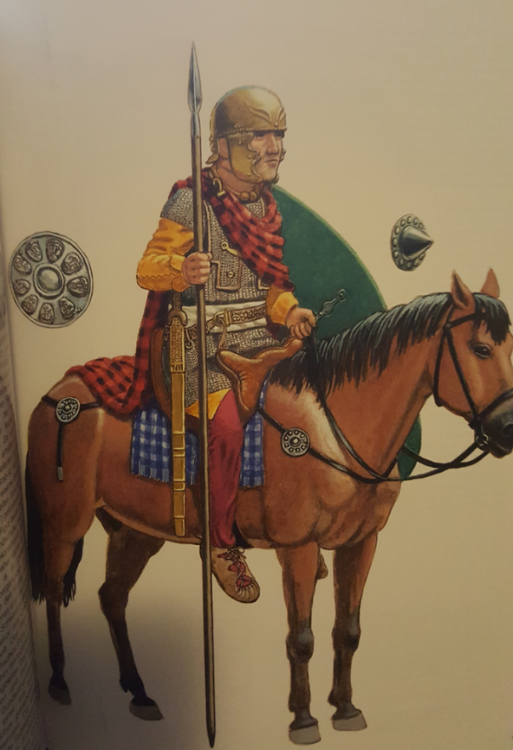
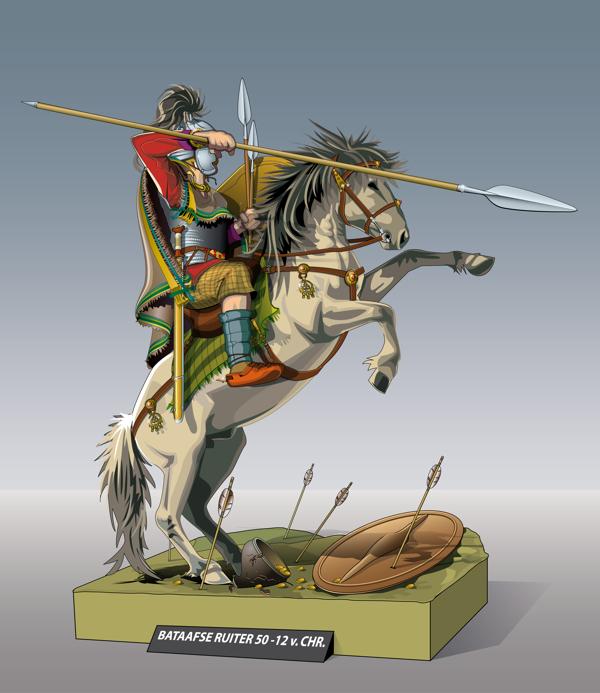
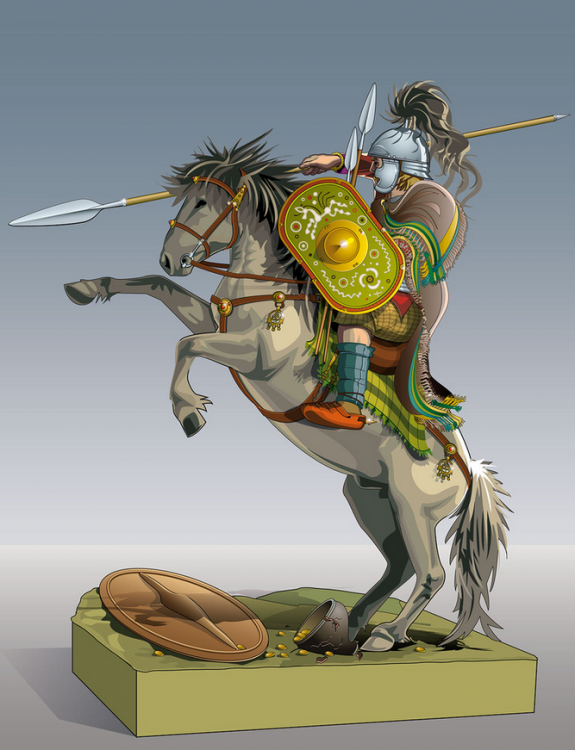
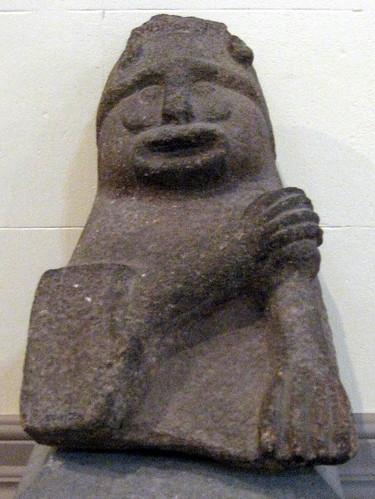
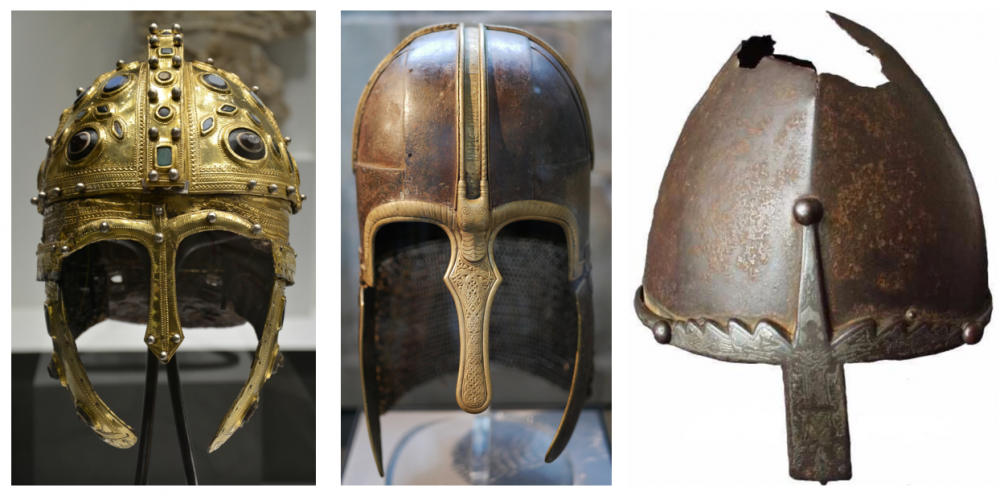
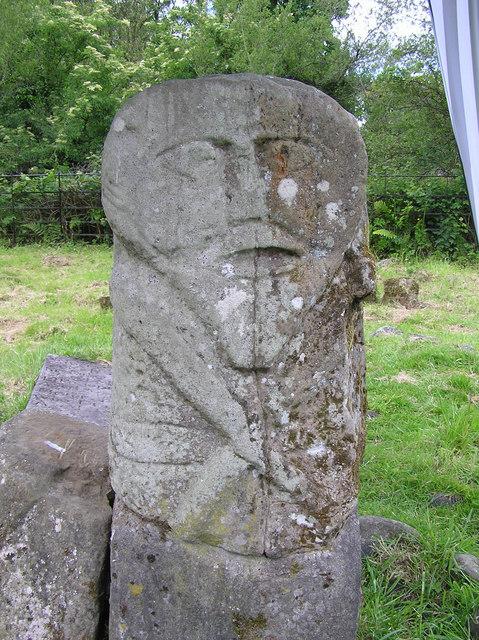
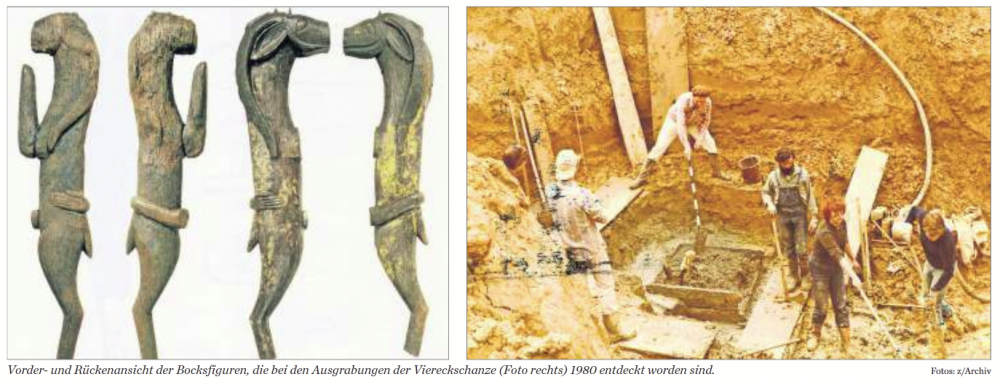
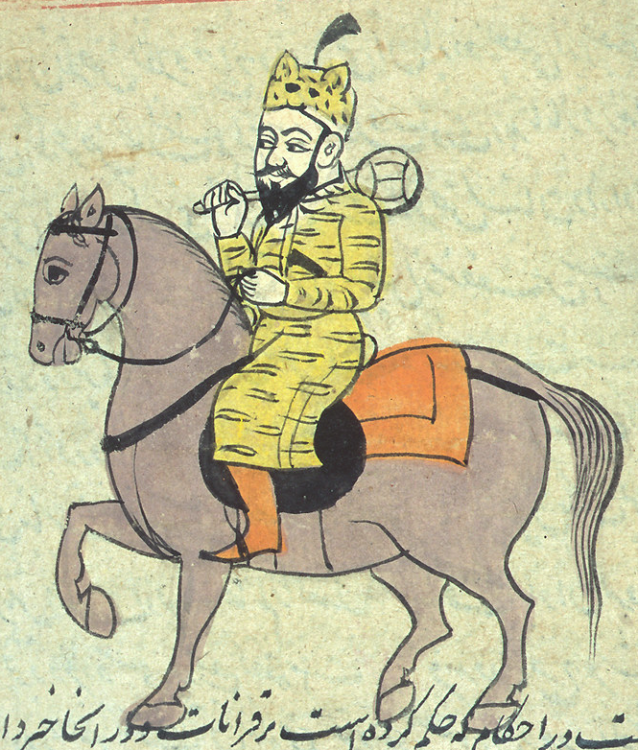
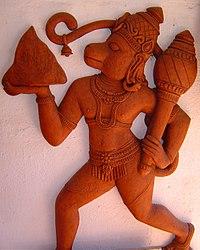
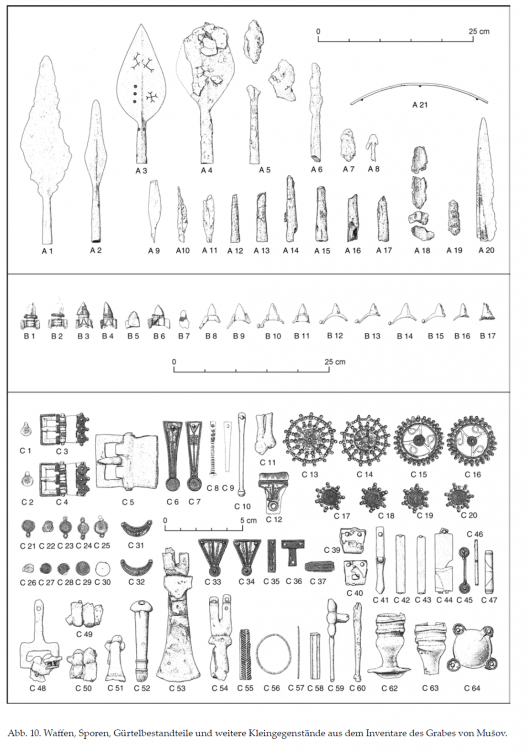
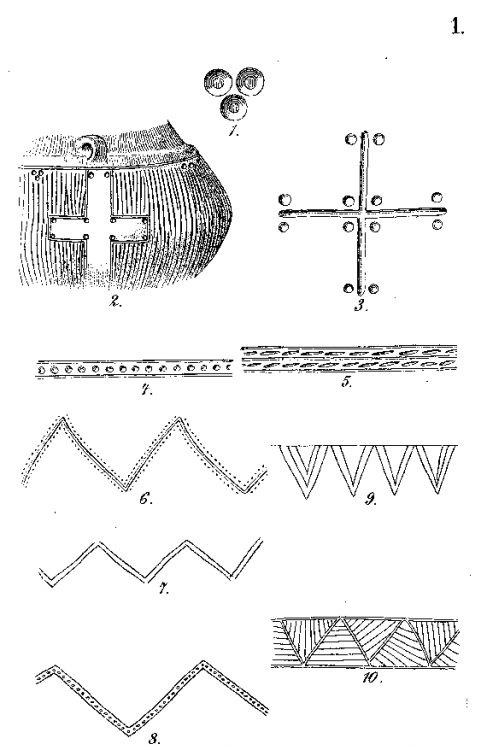
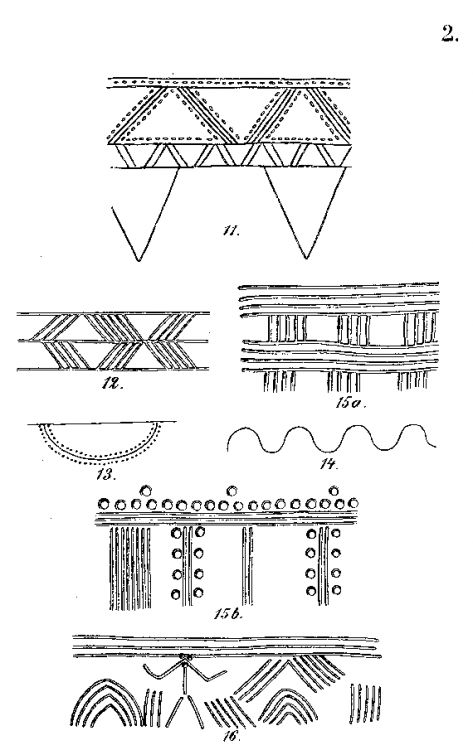
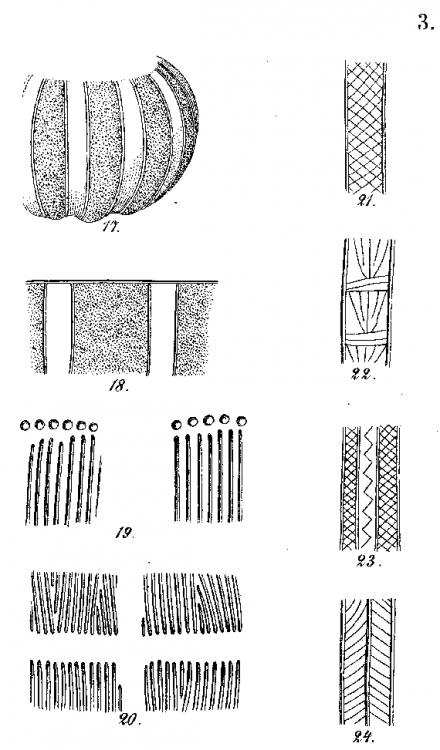
Persians: Kardakes
in Gameplay Discussion
Posted · Edited by Genava55
You can register for free on jstor and have some access each month. Or use sci hub